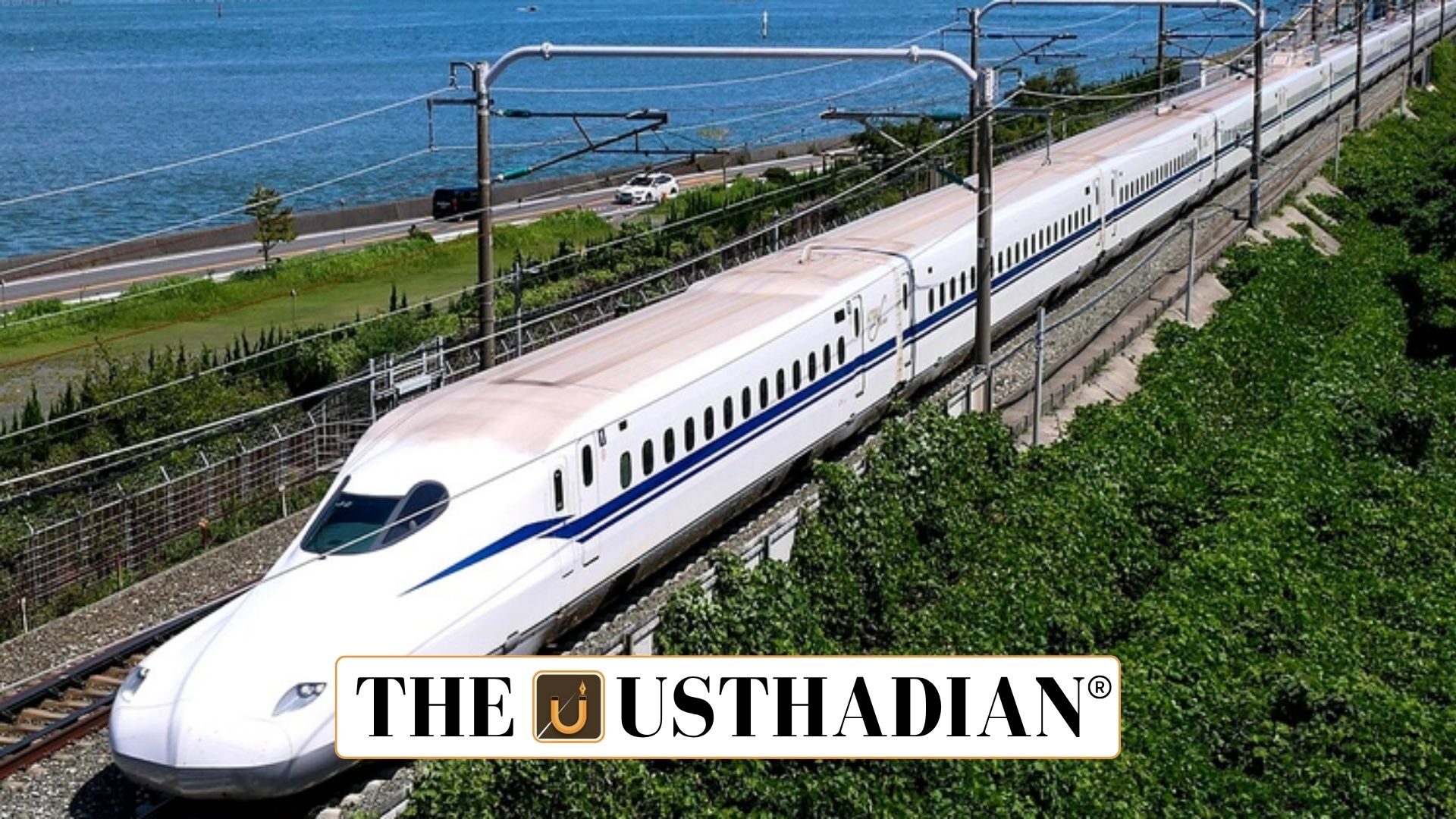A New Era of Rail Transport
India’s First Bullet Train Set to Transform Rail Connectivity: India is stepping into a historic phase of modernization with the announcement that the country’s first bullet train will begin operations by August 2027. The declaration was made by Railways Minister Ashwini Vaishnaw at the Vibrant Gujarat Regional Conference in Mehsana, marking a defining milestone in India’s mission toward a Viksit Bharat (Developed India).
The project represents India’s bold transition from conventional rail systems to high-speed, eco-friendly transportation, aligning with global standards in efficiency and connectivity.
Mumbai–Ahmedabad High-Speed Rail
The Mumbai–Ahmedabad High-Speed Rail (MAHSR), popularly known as India’s bullet train project, spans approximately 508 kilometers, connecting the financial hub Mumbai in Maharashtra with Ahmedabad in Gujarat. The train will operate at speeds reaching 320 km/h, drastically cutting travel time between the two major cities to nearly two hours.
Static GK fact: The MAHSR project is being executed by the National High-Speed Rail Corporation Limited (NHSRCL), established in 2016 under the Ministry of Railways to implement high-speed rail projects across India.
Japanese Collaboration and Technology
The project is being built with technical and financial assistance from Japan, symbolizing strong Indo-Japanese cooperation in infrastructure. Japan has extended a soft loan through the Japan International Cooperation Agency (JICA) to fund the majority of the project cost.
Static GK Tip: The technology used is based on Japan’s Shinkansen model, one of the safest and most reliable bullet train systems in the world.
Gujarat’s Industrial and Rail Growth
During his address, Ashwini Vaishnaw emphasized Gujarat’s transformation over the last decade. The state has emerged as a hub for semiconductor and electronics industries, supported by robust infrastructure and proactive governance.
In the railway sector, Gujarat has witnessed 2,764 kilometers of new lines constructed in the past 11 years, enhancing connectivity between industrial centers and ports.
Static GK fact: Gujarat hosts some of India’s major ports like Mundra, Kandla, and Pipavav, which contribute significantly to India’s export economy.
Symbol of Modern India
Once operational, the bullet train will not only redefine travel but also showcase India’s growing engineering and project management capabilities. It aligns with the vision of Atmanirbhar Bharat, promoting self-reliance through technology adoption and global partnerships.
Experts believe that the success of MAHSR will pave the way for future high-speed rail corridors such as Delhi–Varanasi and Chennai–Bengaluru–Mysuru, strengthening India’s overall transport infrastructure.
Static GK Tip: India’s first passenger train ran between Mumbai and Thane in 1853, covering a distance of 34 km — symbolizing how far India’s railway system has progressed in over a century.
Static Usthadian Current Affairs Table
India’s First Bullet Train Set to Transform Rail Connectivity:
| Topic | Detail |
| Project Name | Mumbai–Ahmedabad High-Speed Rail (MAHSR) |
| Operational Year | Expected by August 2027 |
| Total Length | 508 km |
| Maximum Speed | 320 km/h |
| Implementing Agency | National High-Speed Rail Corporation Limited (NHSRCL) |
| Financial Partner | Japan International Cooperation Agency (JICA) |
| Technology Model | Japanese Shinkansen System |
| Conference Announcement | Vibrant Gujarat Regional Conference, Mehsana |
| Announced By | Ashwini Vaishnaw, Union Minister for Railways |
| Static GK Reference | India’s first passenger train ran in 1853 between Mumbai and Thane |








